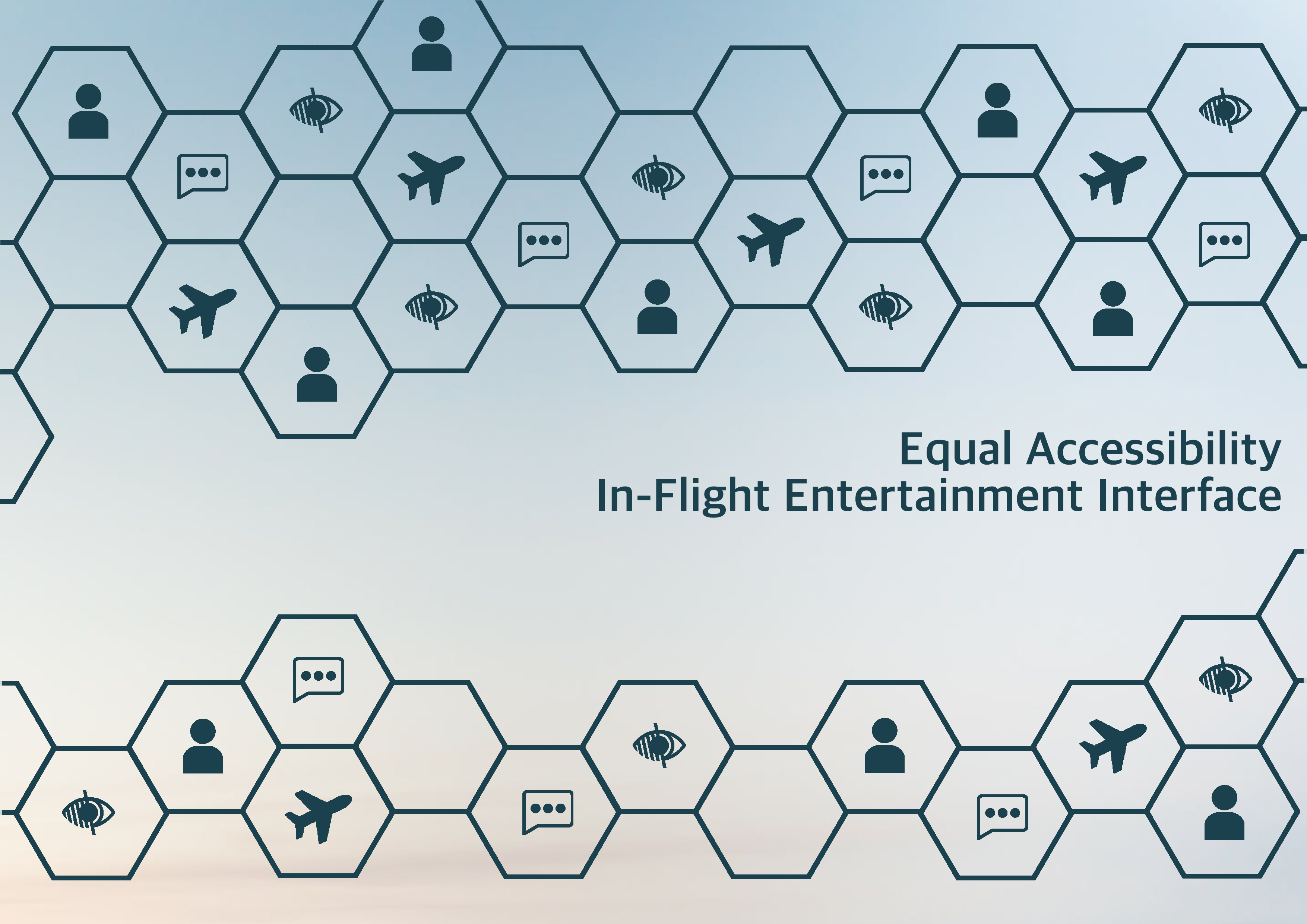Fransisca Devina – [icon name=”linkedin” prefix=”fab”]
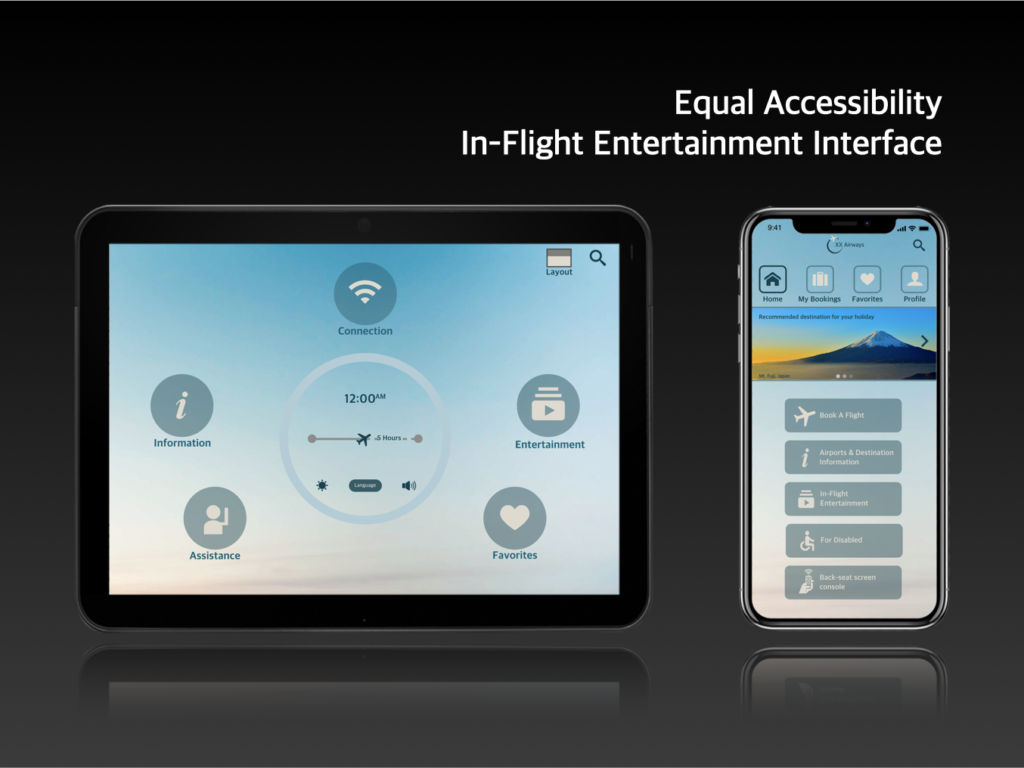
In-Flight Entertainment (IFE) should be accessible and perceivable to all kinds of passengers. As one of the crucial elements in the flying experience, IFE interface functionality should not be limited in the entertainment field only.
This project is focused on how to redesign the existing IFE interface (for back-seat screen and mobile application) to be more accessible for both ordinary passengers and disabled passengers. By integrating some of the features in the interface, especially in giving users’ freedom and control in navigating the interface and also improving the communication with the flight attendants, this IFE interface would not only provide an entertainment but also facilitate passengers to the fullest in their flying experience.
Identify user needs – summary of background research
Using User-Centered Design method as the base of the background research, I started the design process by empathizing with what the users’ feel about the IFE interface and what the options are currently available now. Background research was conducted using online ethnography and trend analysis.
After conducting the background research, the main issues of the IFE back-seat screen and IFE mobile application could be summarized as:

From the data sets of the background research, user profiles were created to develop personas. Storyboards were also created to illustrate the users’ frustration and how they interact with the potential design solution.


From the background research findings, the current users’ needs and issues are identified as below:
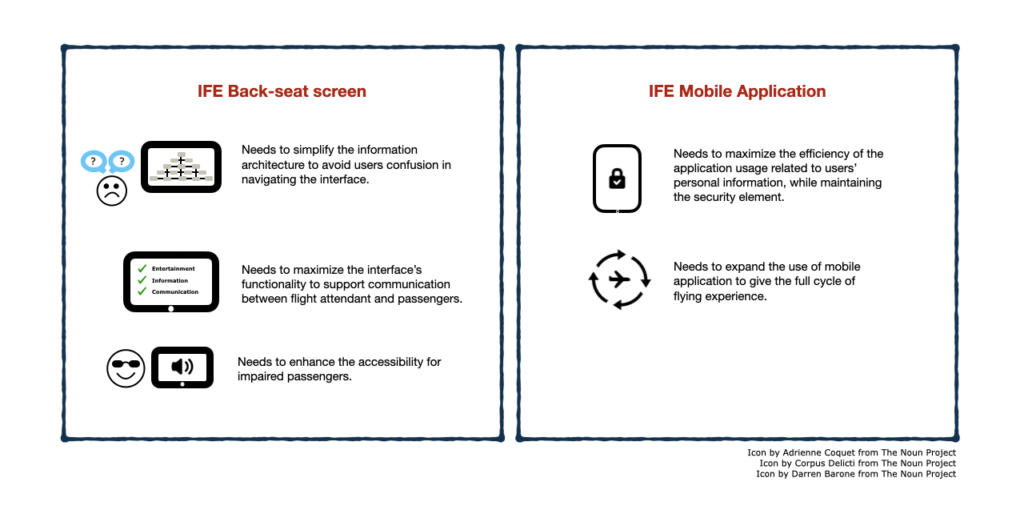
Design Iteration Process:

After identifying the users’ needs and issues, I started the ideation process by brainstorming the potential design solution through sketches. The potential design solutions are:

Low Fidelity Prototype and User Tests
The next step was to create a low-fidelity prototype and conduct a user test.
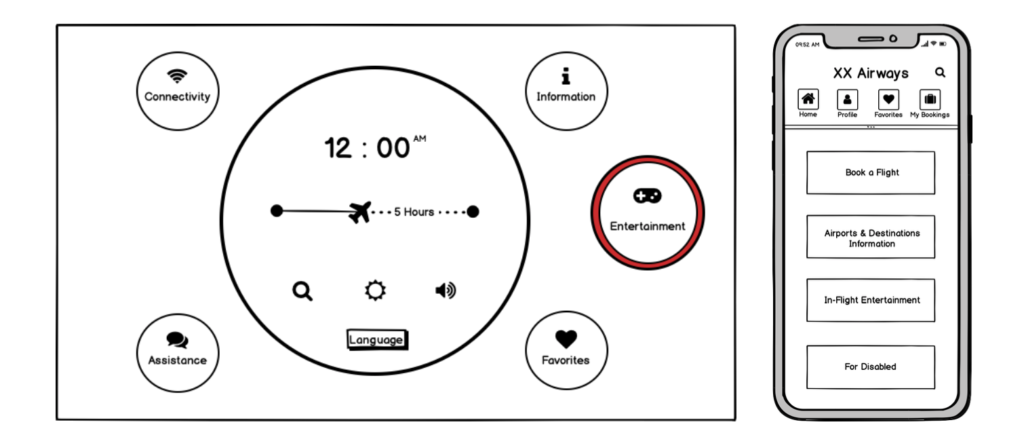
The 1st user test was conducted using the sketches as the prototype and involving 4 participants. From the feedback of the 1st user test, low fidelity prototype in digital wireframe was created and tested. This 2nd user test involved 4 participants with different education background and profession with the range age of 25 – 30 years old.
The user tests were done using the ‘Think-Aloud’ method, where participants were asked to talk about what they saw, thought, and did while completing the task using the prototype.
After the user tests, participants were asked to fill the System Usability Scale (SUS) survey to get the quantitative data of the usability of the tested interface.
From this user tests, some of the findings are:
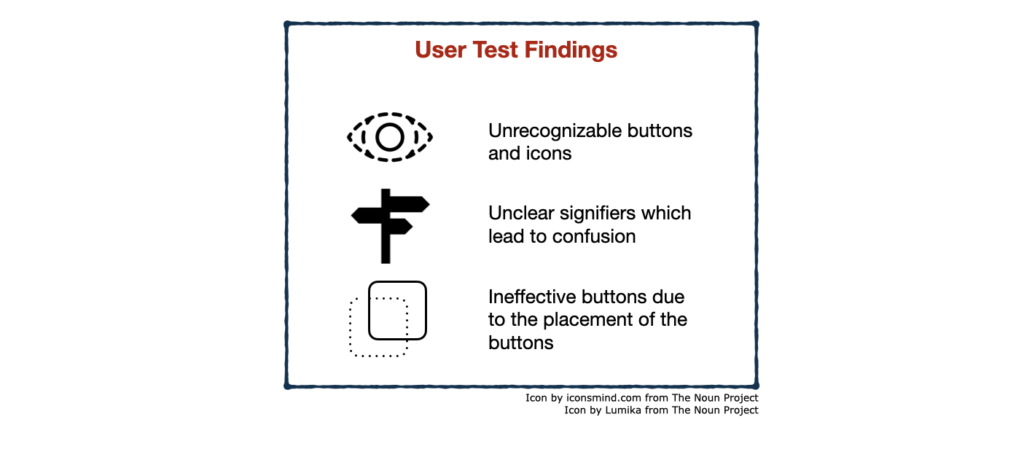
Based on the user test feedbacks, iteration was done by integrating the initial design solutions and adding new design solutions.

High-Fidelity Prototype and User Test
After integrating some of the features based in the user findings, high-fidelity prototype was created and tested. The user test with high-fidelity prototype was done using the ‘Think-Aloud’ method with 5 participants. Like the previous user tests, SUS survey was conducted, and Heuristic Evaluation was also done to test the usability of each element of the interface.
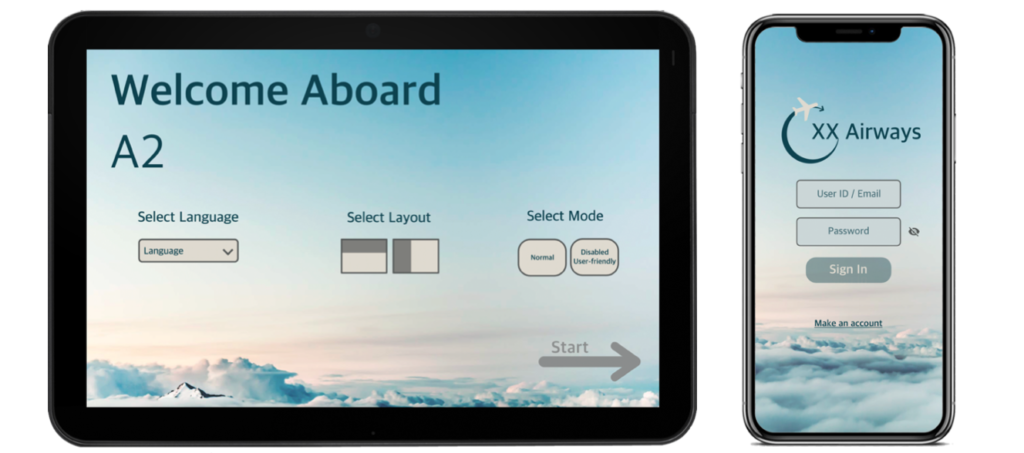

Final Design Solution summary
IFE back-seat screen


IFE Mobile Application

Using the voice-over instruction to integrate the IFE interface’s accessibility would help vision-impaired passengers navigate the interface and give them a sense of independence during their flying experience. It is necessary to create an interface that provides equal accessibility to all kinds of passengers.
The layout selections feature and back-seat screen console would give more freedom and control to the users in operating the interface. The new concept to ask the flight attendant’s assistance through chat would help both the flight attendant and passengers to communicate more effectively.
In the modern era with the advanced technology we have now, the IFE interface should not be seen as an entertainment provider system only but as a system that accommodates passengers fully during their flying experience.
Walkthrough video link:
Back-seat screen: https://youtu.be/H0hNyfBd1Wo
Mobile application: https://youtu.be/vW0V6-IE6OU
Clickable Prototype
